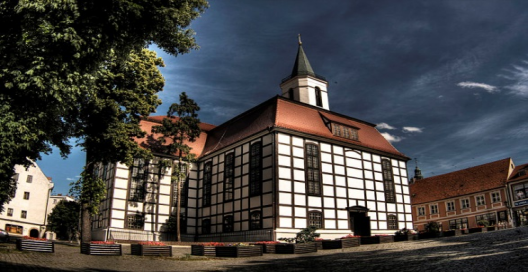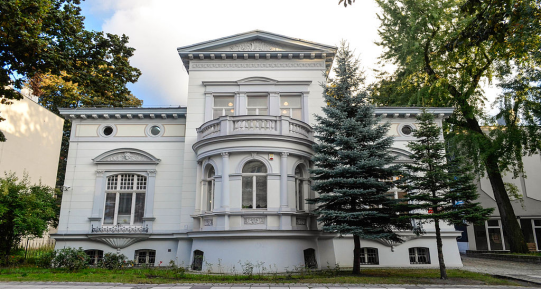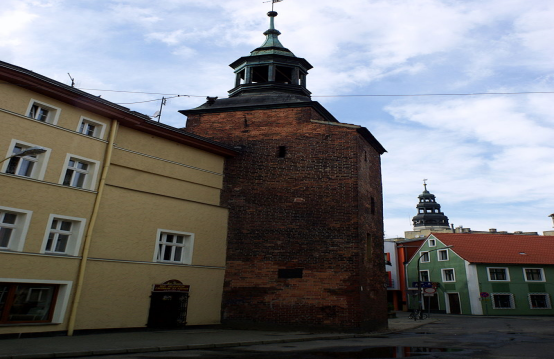Zielona Góra-Lubusz 作者: 来源: 发布时间:2021-05-19
Ⅰ. Population and Area
Population (31 December 2019)
• City 141,222 Increase (24th)
• Density 498/km2 (1,290/sq mi)
Area
• City 278.32 km2 (107.46 sq mi)
www.zielona-gora.pl
Ⅱ.Natural Geography
Zielona Gora is conveniently located in the centre of Europe, not far from the Polish-German border and practically on the crosswords of several international road and rail routes connecting Scandinavia with Eastern Europe and Warsaw with Berlin. The city is 130 km from Poznan and 413 km from Warsaw, and has more than 118 000 inhabitants and covers a total urban and suburban area of 6,000 hectares.
Zielona Gora has an oceanic climate rather than a continental one. Being located on several hills means that the average temperatures are slightly lower than in the surrounding river valleys, and it receives the highest rainfall of the Lubuskie voivodship. As a consequence the city’s climate has been classified as a separate climatic zone.
Zielona Góra is surrounded by tree-covered hills and the adjacent woodland alone makes up approximately half of the city's total area. The name of the city itself translates to 'Green Mountain' in both Polish and German. Moreover, Zielona Góra features several tourist attractions and important historical sites including the preserved medieval Old Town, 13th-century Market Square, tenements, palaces, parks and the famous Palm House on Wine Hill. Its strong connection to vineyards and grape-picking earned Zielona Góra a nickname "The City of Wine".
Transport
Zielona Góra Airport is located at Babimost, north-east of the city. It is currently the eleventh busiest airport in Poland, in terms of traffic size. Formerly a military base, it has become an important transport hub for western Poland. LOT Polish Airlines currently offers daily flights to Warsaw.
Main train station in Zielona Góra
Zielona Góra has train connections to Gorzów Wielkopolski, Zbąszynek, Rzepin, Warsaw, Frankfurt (Oder) and Krakow, main cities of the surrounding regions: Poznań, Szczecin and Wrocław as well as direct international connections to Berlin, Vienna.
The city lies at the junction of National Road 3, National Road 27 and National Road 32 and is a major interchange on S3 Expressway along European route E65.
By plane
There is a national airport 4 km away from Babimost, a city close to Zielona Gora, with daily flights to Warsaw operated by LOT. Negotiations are being held to introduce some international flights within the European Union.
By train
The Polish State Railways has train connections from Szczecin, Warsaw, Gdańsk, Kraków, Wroclaw, Poznan, and many other cities. However, there is no direct train connection from Berlin, Germany.
The railway station is situed east of the city centre, it is just a 10-minute walk from the old town. You can also take the bus or taxi to reach every place in the city. The taxi meter starts at PLN 6.00 with increments of PLN 1.20.
By train from Berlin
First, you have to travel to a city in the border with Poland.
From the cheapest to the most expensive, the options are:
Take the RegionalExpress to Frankfurt (Oder). It leaves from Berlin Ostbf. Price (April 2011): EUR 9.20
Take the Niederbarnimer Eisenbahn to Kostrzyn. It leaves from Berlin Lichtenberg. Price (March 2014): EUR 11.40
Take the EuroCity to Rzepin. It leaves from Berlin Ostbf. Price (April 2011): EUR 23.00
Then take a train to Zielona Gora. Always check the time table in advance. Train osobowy is the cheapest, REGIO is slightly more expensive.
By car
You can easily get to Zielona Gora by car from Wroclaw, Poznan and Szczecin. You can get there easily from Germany as well, via well-developed crossings at the border in Świecko, Gubin, Słubice, Gubinek, Łęknica, etc.
Zielona Góra has a good road infrastructure. Parking in the city centre can be a problem sometimes, since there are few parking places to satisfy the demand.
By bus
There are many domestic connections, sometimes faster and cheaper than the train.
There are also international connections
Get around
By bus
There are over 30 lines that connect different points in the city and surroundings. Except for a few lines, the frequency is not good. Some buses run until around 11:00 pm, most until around 10:00 pm and buses like number 12 until around 4:00 pm. Some buses do not run on weekends (e.g., bus number 5, which goes to Auchan). There are three lines of night buses. The N2, for example, runs at around 5:30 on Sunday morning (very inconvenient if you go out on Saturday night!). There are two free lines that run daily: lines 55 and 77, going to Auchan and Tesco, respectively.
Tickets (as of November 2014) cost PLN 3.00, no matter how far you travel. There are discounts for students, children and senior citizens. All buses are eqquiped with ticket vending machines, which work only with coins. You must validate your ticket.
See the website of the municipal bus company for more information and time tables.
By taxi
There are lots of taxis in Zielona Góra, they are easy to find and quite cheap. Always remember to choose the taxis belonging to one of the "corporations" i.e. one of the taxi companies, they are easy to identify as they are colourful with lots of adverts and always a specific phone number on the roof of the cab.
Prices: Taxi from the railway station to the University (4.5 km i.e. 3m) 11-13zł. Of course it is dearer at night or on the weekends.
Ⅲ.Economy
-GDP 2017
– Total Nominal: €10 billion
-PPP: $14 billion
– Per capita Nominal: €17,300
-PPP: $20,900
The city has been known for its wines for centuries. It is now one of two places in Poland with wine grape cultivation mainly for white wines (the other being the wine growing region near the town of Warka in Masovia). The first wineries around the city were built in 1314. At Paradyż (Paradise) Abbey near Zielona Góra, monks have been making wine since 1250. The number of vineyards at peak production is estimated at 4,000 in the region, and 2,500 in Zielona Góra itself. During the communist era wine production was reduced, but since 1990 it has recovered. Since 1852 an annual Wine Festival has taken place in the town. However, nowadays wine is no longer produced in Zielona Góra itself (the last factory was closed in the early 1990s).
Ⅳ.Industrial Characteristics
It has been a big wine producer for a long time, and cultivation of grapes date back to the medieval times. The decline of its wine production started with the arrival of the railway, (when it was part of Germany) and it became quite cheap for Silesia to import wines from other wine producing regions. The industry changed its profile to produce other alcohols, such as sparkling wines, brandies, and others. Wine production finally came to an end with the coming of the communist era. The growing city absorbed the countryside, and the quality of wine produced here became disastrous, so people started buying other products, especially Hungarian and Bulgarian wines. The main wine producer went bankrupt in early '90s. The tradition however is triumphing once again with growing number of small wine producers in the Zielona Góra region, the revival of the tradition is encouraged by the city and region authorities. The local products can be bought during the annual wine festival in September.
Today Zielona Góra is a vibrant city full of young people because of its university. The city is also home to a couple of hi-tech companies. Even though it is a Silesian city, it is now the capital of the Lubuskie region. The city is also known for its cabarets (comical groups).
Key Projects
1. The E-mobility now program starts!
The Polish Chamber of Electromobility Development (PIRE) is a non-governmental organization, the main goal of its activity is to increase the number of electric vehicles in Poland, as well as to create conditions for the development of real electromobility in cities.
PIRE's partners are local government units, companies from the e-mobility industry, non-governmental organizations, academia and technology companies.
Zielona Góra – Internetowy Serwis Miejski – Startuje program E-mobility now! http://www.zielona-gora.pl/PL/971/7789/Startuje_program_E-mobility_now/
2.Support from the program "For Life"
Today, the mayor of the City of Zielona Góra, Janusz Kubicki, has signed contracts with the Lubuskie Voivode, Władysław Dajczak, for the modernization of the Environmental Self-Help House at ul. Witebska in Zielona Góra and the construction of a new building from the transformation of the Occupational Therapy Center at ul. Glowacki.
Zielona Góra – Internetowy Serwis Miejski – Wsparcie z programu "Za życiem" http://www.zielona-gora.pl/PL/971/7776/Wsparcie_z_programu__Za_zyciem/
Ⅴ.Attrations and Cityscape

Timber-framed Catholic church

Music school

The Hunger Tower from the 15th century
The most attractive time of the year to visit Zielona Gora is September, when the annual grape harvest is held, part of the Days of Zielona Gora. Street fairs, trade shows and wine tastings are accompanied by a series of cultural events. The best of Polish jazz musicians flock here at this time and perform in the “Harlem” pub. Each year, new attractions are added to enhance the entertainment and educational value of the festival.
However, there are growing numbers of people coming to this capital of the Lubuskie region simply to appreciate its historic buildings, picturesque countryside and nearby lakes. Most buildings in the centre of Zielona Gora were erected in the early 20th century and they add an eclectic feel to the area. The Lubusz Country Museum is an essential visit for every visitor to Zielona Gora, with its interesting section dedicated to wine production.
Zielona Gora offers various cultural and recreation opportunities. Music lovers will find pleasure in the concerts by the Tadeusz Baird Philharmonia of Zielona Gora, which has close links with similar orchestras in Europe
Ⅵ.History and Culture
The origins of Zielona Gora are to a large extent connected with the Duchy of Glogow, held by the Silesian Piast dynasty. Already by the 13th century a Slavonic settlement had grown up in a small valley here in far north-western Silesia, and its earliest mention dates from 1222.
From the very beginning, Zielona Gora grew based on the manufacture of woollen cloth and the growing of grapes. Vineyards are first referred to in 1314, while the first mention of cloth fulling can be found in documents dating from the 15th century. The first vineyards were established to the north of the city, while Carl Samuel Hausler made the first champagne from grapes picked on the “Jelenia Gora” hill in 1826.
Around the year 1323 Zielona Gora received city rights, and saw a large influx of settlers from Germany. At the end of the 14th century the population of Zielona Gora had grown to 1000. Defensive walls were constructed in the 1430s during the Hussite wars, only to be demolished 300 years later as the city outgrew them. Today, just a small section of these walls remain.
In the 16th century the Duchy of Glogow fell under the rule of Czech kings. Frederic II of Prussia invaded and captured Silesia in 1740 and from then on Zielona Gora was a part of Prussia.
At a time when wine industry was beginning to lose its significance in the 19th century, local people began to recognise that the impromptu entertainments at the end of grape picking period that had been performed for centuries could be organized into a festival and hence easily become a magnet for tourists.
Remnants of the former vineyards in the Wine Park surrounding the Pal House are all that survive from the time when grape growing was a central part of Zielona Gora’s economy. The wines were produced for export to a number of cities, mainly in northern countries where the local cuisine favoured these types of wines.
Zielona Gora belonged to Germany until the end of World War II, after Prussia had become part of the German state in the 19th century. The Red Army seized the city on 14 February 1945, during the final months of the war. A couple of months later Zielona Gora was officially taken over by a Polish mayor.
Ⅶ.Other Information
Zielona Góra is the largest city in Lubusz Voivodeship, located in western Poland, with 141,222 inhabitants (2019). Zielona Góra has been in Lubusz Voivodeship since 1999, prior to which it was the capital of Zielona Góra Voivodeship from 1950 to 1998. It is the seat of the province's elected assembly, while the seat of the centrally appointed governor is located in the city of Gorzów Wielkopolski. Zielona Góra has a favourable geographical position, being located not far from the Polish-German border and on several international road and rail routes connecting Scandinavia with Southern Europe and Warsaw with Berlin. The region is also closely associated with vineyards and holds an annual Wine Fest.
Ⅷ.Contact Information
-Mayor Janusz Kubicki (BS)
-Zielona Góra City Hall ul. Podgórna 22
-65-424 Zielona Góra
-e-mail:
-UrzadMiasta@um.zielona-gora.pl
-phone: 68 45 64 100
-fax: 68 45 64 155
